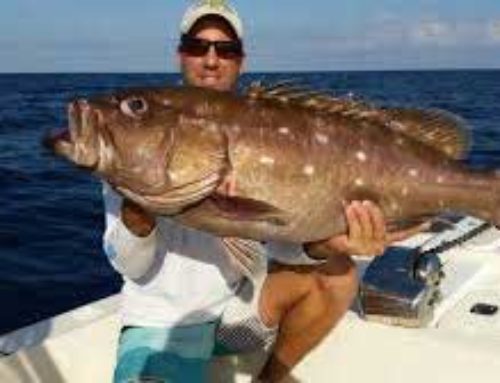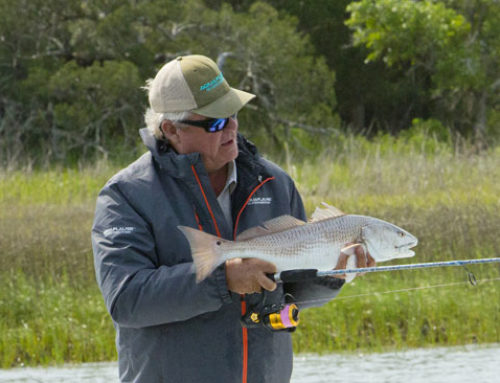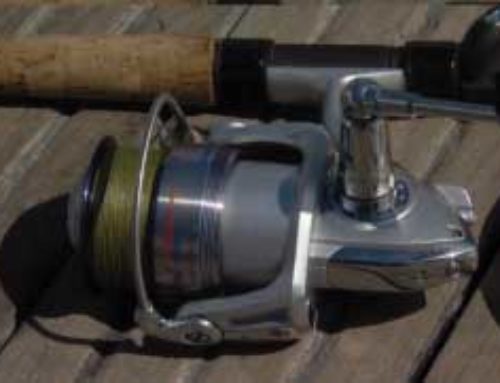When you’re sights are set on powerful saltwater game fish and the only thing keeping you hitched to a powerful pelagic traumatized tarpon is a thin strand of fishing line, you need strength, abrasion resistance, low stretch and durability. Welcome to the complex world of modern fishing lines.While there are many choices available in fishing line, monofilament remains extremely popular due to its versatility and relatively low cost. Monofilament is inherently stretchy which combined with a smooth drag and flexible rod, allows anglers in every arena the ability to beat powerful game fish on relatively light-tackle.
The key to selecting the correct mono filament is to spool with a line that features the precise characteristics that match your specific needs. For example;if you predominately fish with spinning reels, you‘ll typically want to spool with a monofilament line that casts well and handles easily, one with low memory that resists kinking and coiling. Of course, abrasion resistance,sensitivity and tensile strength are also important factors that cannot be overlooked.
For decades, monofilament has been the most commonly used of all fishing lines and it will likely remain that way well into the future. Despite the fact that there are newer lines now available, some of which are much better suited for certain applications, monofilament continues to remain a top choice for a wide variety of applications.

Monofilament stretches up to a third of its length under pressure. The elasticity allows for advantages and disadvan tages. Line stretch weakens the strength of the line as a fish exerts pressure from the other end. However, it also allows for extra reaction time when a fish decides to run or jump. This extra reaction time provides the angler with the brief moments needed to make adjustments before the unfortunate quarry comes unbuttoned due to a pulled hook or parted line.
Monofilament fishing line comes in many different colors, from clear to camouflage, and every angler has his or her preference depending on the application. Obviously, you’ll want to select the color that will be the least visible to the fish considering the prevalent conditions. We’ll talk more about line color in a moment.
For now, let’s not forget that “mono” is a word that means single. In the diverse world of fishing lines that means monofilament is a single strand of line. It is a one component product that is formed through an ex trusion process in which molten nylon is formed into a single strand through a die. What you may not know is that mono filament fishing line is a polymetric by product of crude oil processing, and that premium grade monofilament receives more quality control, more additives and more attention to detail in the finishing process to make it more durable and abrasion resistant. That is why premium monofilament fishing line costs more.
An alternative to monofilament is one of the latest advancements in fishing line technology, cofilament line, which like most monofilament line, stretches under pressure.Cofilament line, however,offers greater flexibility than ordinary monofilament. This allows for extended casting distance and increased accuracy, while maintaining the line’s sensitivity and strength. Rather than a single strand monofilament, cofilament fishing lineuses an inner and an outer wrap of nylon to help ensure the lines ability to resist wear and tear. Line strength, diameter and price are typically on par with various high quality monofilaments.
Line Lingo
Next in line (no pun intended) are fused fishing lines, which are manufactured from many layers of microfilaments of gelspun polyethylene fibers fused together to produce a single strand of line that is ultra-thin, super strong and incredibly sensitive. Fused lines feature good abrasion resistance; yet remain easy to cast while providing solid hook sets. While fused lines are more costly, they do offer significant advantages. The composition,along with the fact that these lines have virtually no memory, allows for easy and accurate casting. Polyethylene lines are strong, with breaking strengths similar to that of modern super-braids. Fused lines also have minimal stretch, making them ideal for working jigs in depths far below. Some anglers feel that the dark color of these lines is detectable by fish under clear conditions, but for the most part, fused fishing line offers more pros than cons.
Fluorocarbon is yet another option, and is a polymer that is nearly invisible in water because it has an almost identical refractive index (an indication of the degree at which light refracts or bends as it passes through a substance). Fluorocarbon is inert, so it resists deterioration by sunlight and harsh chemicals, such as those found in reel lubricants and protective sunscreen.
Fluorocarbon fishing line originated in Japan where anglers are particularly fussy about bait presentations. Asian fisheries are heavily pressured, so lifelike bait presentations are crucial. Ultimately, U.S. anglers began using fluorocarbon leaders, primarily in saltwater and fly-fishing applications, for the same reason the Japanese were using it – low visibility and it’s faster sinking qualities. It caught on when anglers reported experiencing a greater level of success with it. Original fluorocarbon leaders were stiff and very expensive, but the latest technologies have produced more flexible fluorocarbon at relatively affordable prices.
While fluorocarbon certainly offers advantages in clear-water situations where fish are heavily pressured and skeptical to strike, it is more expensive and remains best suited as a leader material rather than a main-line. You should know that because fluorocarbon does not absorb water, it will not weaken or increase in stretch like monofilament fishing line. Fluorocarbon’s added density also makes it very abrasion resistant, so it sinks faster than monofilament and is ideal when fishing heavy structure. And because fluo rocarbon stretches slower and less than monofilament and cofilaments, particularly when compared to wet lines, it’s more sensitive than its counterparts.While it appears the choices are limitless, what we can recommend for certain is that you should only spool your reels with quality fishing line that you are com fortable with and confident in. Whichever brand you decide on, and there are many to choose from, stay far away from inexpensive “blue light special” fishing lines found on the shelves of major retailers. The few dollars you will save upfront will ultimately cost you quality fish in the long run.
Lb. Test
Note that lb. test is the minimum breaking strength of any given fishing line. When it comes to monofilament,a mixture of polymer pellets are heated until fluid and then extruded through a tiny hole to form a single strand of line.The size of the hole and the amount of stretch controls the diameter of the line and to some extent, the lb. test of the line.The strand is cooled quickly and wound onto a large spool. The type of chemicals in the mixture controls the qualities of the line such as limpness, strength, toughness and other desirable factors.Manufacturing the highest quality monofilament and cofilament fishing line is actually an art with experienced craftsmen playing a big role in the fishing line’sultimate characteristics.
Diameter
Diameter is measured in the thousandths of an inch with a digital micrometer for uniformity over the entire length of the line. The diameter of a line is important for several key reasons.Generally, the thinner the diameter the better as long as the line’s other properties such as castability, abrasion resistance and strength aren’t compromised. With thinner diameter lines, more line can be spooled onto the reel, giving fishermen increased capacity to fight fast running fish. Also,thinner diameter lines are generally less visible.Plus, a thinner diameterline will generally yield better action as the lure or bait is worked through the water column. Many in the industry believe increased testing should be done on all lines as only a few major labels actually manufacture their product here in the U.S. The vast majority of fishing line is developed overseas and is sold to domestic companies who then marketthe line under their own brand.
Color
The color ofmonofilament fishing line is controlled by chemical additives.Color has no effect on lb. test, diameter or breaking strength. If you are fishing dark,muddy or stained waters, a dark color line is best. Moss green for example is best suited for waters with heavy vegetation.Fluorescent line is ideal during bright sunlight when you need to see your line above
the surface, whether you are trolling or casting. Bright hi-vis yellow is much easier to track than lo-vis clear, which perfectly blends into most waters and is ideallysuited for ultra-clear conditions.
Memory
Most conventional fishing lines are fairly stiff with tension so they habitually take on the rounded form of a reel’s spool. This is known as memory and is responsible for most backlashes and overrunning of spinning reels. Fortunately, with high-quality monofilament line,memory is reduced, and a few long casts is usually all that is required to straighten monofilament line, even if it’s been sitting on the reel for long periods of time.
Abrasion Resistance
Fishing lines with a high level of abrasion resistance will hold up well against nicks and chafes and will resist breaking for longer periods under the worst conditions, such as rubbing against pilings, oyster beds and other unforgiving structure. To determine aline’s abrasion resistance, each line’s average cycle is divided by its diameter. A common test that is performed involves taking three identical lengths of line and affixing each one to one of three arms on a specialized machine. To the opposite ends of each line are attached weights. This allows the middle section of each line to rest overthree separate drums of fine grade sand paper. When the machine is activated,the arms move up and down until all three lines part. Each cycle is recorded on a separate clicker above the respective arm. It’s a very simple operation,but very effective and quite accurate.
Knot Strength
The majority ofline breaks occur at the knot.In fact,no matter how strong the line is,a knot can weaken the line by asmuch as 50-percent. The actual knotstrength of a fishing line is measured by using a machine developed specifically to measure line breakage. To test a line sample, one end is wrappedaround a small disc on the measuring end of the machine. A knot is tied in the center of the line sample before the other end is connected to another disc at the opposite end of the machine. When the test begins, the larger wheel rotates at a constant speed until the knot snaps.The final breakage point is displayed and recorded.
Super SpooLing
If you’re anything like us, you don’t get to spend enough time on the water. The last thing you want is to spend all day pulling out backlashes and dealing with line twists. It’s important to know the difference of spooling a spinning reel versus a conventional reel. On a spinning reel, lay the spool upright, label side up. Apply tension on the line and fill the reel all the way until the line is about a quarter of an inch from the outside edge of the reel’s spool.With a conventional reel, lay the spool of line on its side with the line unwinding off the top of the line spool. Apply tension, and fill the reel to about a a quarter of an inch from the top of the reel’s spool.
Line Care
When you purchase fishing line, buy it from a retailer who does high volume sales. Light and heat weaken its properties, so you want the freshest line you can get your hands on. Before each use, inspect your line for nicks and abrasions. After each use, thoroughly rinse your reel and line with a steady stream of freshwater.
All Momoi Diamond and Hi-Catch Monofilament meet all these high standard requirements and lives up to it’s proven reputation as THE WORLD’S FINEST MONOFILAMENT LINE!





